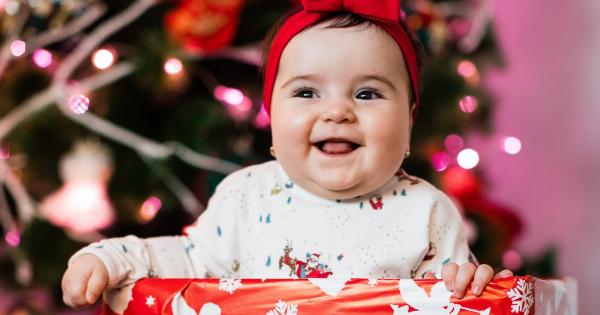Many parents often notice their babies’ cheeks turning red or flushed at times. While this can be concerning, especially for first-time parents, flushed cheeks are actually quite common in infants.
In most cases, this flushing is harmless and is typically a result of various factors. In this article, we will explore the causes of flushed cheeks in babies and when it may be a cause for concern.
1. Normal Development
One of the most common reasons for flushed cheeks in babies is their normal development. Babies have an immature circulatory system, which can cause redness or flushing of the cheeks.
This flushing occurs due to the dilation of blood vessels near the skin’s surface. It is considered normal and usually goes away as the baby’s circulatory system continues to mature.
2. Physical Activity
Another reason for flushed cheeks in babies is physical activity. When babies become active, whether by crawling, playing, or even crying, their blood circulation increases. This increased blood flow can cause the cheeks to appear flushed.
This type of flushing is temporary and usually subsides once the baby has calmed down or stopped physical exertion.
3. Environment
The environment can play a significant role in causing flushed cheeks in babies. Exposure to warmer temperatures or being bundled up in excess clothes or blankets can result in excessive heat on the baby’s face.
This can cause the blood vessels to dilate and the cheeks to become red and flushed. Ensuring that the baby is dressed appropriately for the temperature can help prevent this type of flushing.
4. Teething
Teething is a significant milestone in a baby’s development, and it often comes with various symptoms. One of these symptoms is flushed cheeks. The increased blood flow associated with teething can lead to redness or flushing around the cheeks.
This type of flushing is generally temporary and should resolve once the teething process is complete.
5. Allergies
Allergies can also cause flushed cheeks in babies. Allergic reactions, particularly food allergies or sensitivities, can trigger histamine release in the body.
Histamine is a chemical that causes blood vessels to dilate, leading to flushing of the skin, including the cheeks. If you suspect your baby has an allergy, it is essential to consult a healthcare professional to determine the appropriate course of action.
6. Infection
In some cases, flushed cheeks can be a sign of an underlying infection in babies. Fever, a common symptom of infections, can cause the cheeks to appear red and flushed.
Infections such as viral illnesses or respiratory infections may also lead to flushed cheeks. If your baby has other accompanying symptoms, such as a high fever or difficulty breathing, it is crucial to seek medical attention.
7. Skin Sensitivity
Babies have delicate and sensitive skin, which can be easily irritated. Some babies may experience flushed cheeks as a result of skin sensitivity to certain products or irritants.
Harsh detergents, fragrances, or even saliva from drooling can cause skin irritation and redness. Maintaining a clean and irritation-free environment for your baby can help prevent this type of flushing.
8. Eczema
Eczema, a common skin condition in babies, can also contribute to flushed cheeks. Eczema causes inflammation and irritation of the skin, resulting in redness and flushing.
If your baby has eczema, it is essential to follow a proper skincare routine recommended by a healthcare professional to manage the condition effectively.
9. Weather Changes
Fluctuations in weather conditions can impact the baby’s skin and lead to flushed cheeks. Exposure to cold weather or windy conditions can cause dryness and irritation, resulting in redness and flushing.
Applying a moisturizer and protecting your baby’s skin during extreme weather changes can help prevent this type of flushing.
10. When to Consult a Healthcare Professional
While flushed cheeks are usually harmless in babies, there are instances when it may be necessary to seek medical advice.
If your baby’s flushed cheeks are accompanied by other concerning symptoms such as difficulty breathing, fever, persistent rash, or excessive fussiness, it is crucial to consult a healthcare professional. They can assess your baby’s condition and provide appropriate guidance or treatment if necessary.































